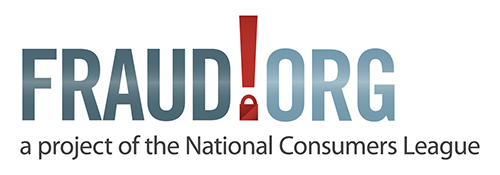Gen Z students should beware scammers preying on back-to-school shoppers
As the calendar turns to September, millions of Gen Z’ers are headed back to school. With COVID-19 still a huge concern, “back to school” means a variety of things this year: traditional in-person classes, all-virtual classes, or hybrid models of the two. Regardless of what the first day of school looks like, chances are that getting new clothes for first-day-of-school photos is on the to-do list. Advocates are warning, however, that young clothing shoppers are being targeted in a new scam and they need to be on the lookout.
Discount, vintage, or second-hand fashion buying apps targeted at Gen Z and Millennial customers with names like Depop, Poshmark, ThreadUp, and LetGo have been growing in popularity. These apps typically connect buyers and sellers of secondhand merchandise, especially fashion items or in-demand technology accessories like headphones or cell phone cases.
Depop is one of the fastest-growing apps in this category. It has been downloaded more than 5 million times on the Google Play Store and is currently the #4 shopping app on the Apple App Store. At a time when traditional clothing retailers’ fitting rooms may still be closed due to COVID, these apps are well-positioned for an even bigger surge in popularity.
While the services can be a great place to score a deal, scammers are also paying attention to the platforms’ new popularity, fueling a significant uptick in complaints from users.
In a typical scam, scammers posing as legit sellers post deeply discounted merchandise (think luxury fashion, the latest sneakers, or in-demand technology like gaming consoles). As shoppers show interest, the seller urges the user to complete the transaction outside the platform’s built-in payment system. Complaints we’ve reviewed have indicated that scammers often ask buyers to use P2P payment apps like PayPal’s Friends & Family, Zelle, or CashApp or even less secure payment methods like gift cards or wire transfers. Scammers seek victims willing to complete payment this way because it is harder for a transaction to be disputed when it occurs off of the selling platform.
Whether you’re a Gen Z’er shopping for the must-have fashion of the fall, or are just looking for a deal, here are tips you can use to spot and avoid these scams:
- Always pay via the platform’s preferred payment methods. If a seller asks you to pay another way, even if it’s to “avoid fees,” chances are that it’s a scam.
- Check the prices on similar merchandise on the app and on other apps. If that Louis Vuitton handbag or Supreme hoodie you’re interested in is listed at a fraction of the cost of similar bags elsewhere, there’s a high likelihood that it’s a scam.
- Beware of sellers who don’t have any customer reviewers or who *only* have positive feedback. No feedback could point to a scammer who has created multiple accounts and is churning through them as the old ones get banned. Someone who *only* has positive feedback could be paying accomplices to write bogus reviews. Look for balanced reviews and see how sellers have handled negative feedback from customers.
- If you get scammed, report it promptly to the platform. While the platform may not be able to get your money back for you, reporting the scam can help other users avoid falling victim.
If you suspect that you have become a victim, report it immediately. You can file a complaint at Fraud.org via our secure online complaint form. We’ll share your complaint with our network of law enforcement and consumer protection agency partners who can investigate and help put fraudsters behind bars.







